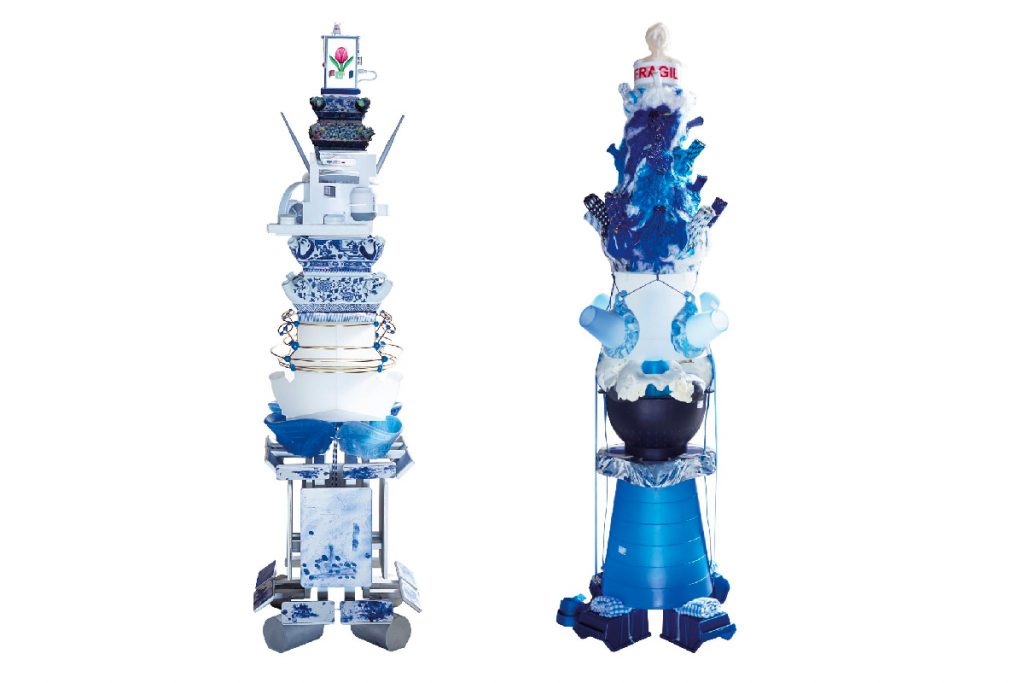The phrase “Made In China” is synonymous with cheap, knockoff copies of major brands in fashion,
technology, furniture and numerous other industries.
Recent headlines have even gone so far as to warn
Kickstarter users to prepare to have their ideas stolen before they’re funded. The open-source manufacturing culture in the country means that thousands of small and major production operations.It could spot an idea online and begin mass producing cheaper, near-identical copies of the idea. So what
does this mean for the Chinese creative? Is there room for original design in an economy driven by the cheap cost of reproduction? It’s what Design Academy Eindhoven graduate Jing He calls the “Chinese identity crisis”. Her MA project, The Tulip Pyramid in an attempt to unpack some of the complexities of the Chinese creative scene.
Chinese identity crisis

As a Chinese designer, she is frequently asked whether her work reflects her Chinese identity. She wondered: What dose that mean? What is Chinese design? And in what way does it differ from design made by people with other nationalities?

China has undergone fast economic growth in the past 30 years, and the quick changing of life and culture triggered a crisis of identity. Large factories producing counterfeits of ‘original’ designs are in large part responsible for China’s economic growth. She researched the historical, political, economic and cultural reasons behind the phenomenon of copying in China. Considering that the design profession is one of creativity, it should not come as a surprise that Chinese designers are sensitive to the subject of copying;
It supposedly conflicts with the creativity of the profession.As such. Chinese designers are facing the fact that a large amount of counterfeits have been produced in China are left questioning their identity. In a mass-production industry, copying is an important method, thus people need intellectual property laws to protect their investment and profits.

Think for instance aboutthe ongoing legal and cultural conflict between Joyme and IKEA. Or the Chinese acquisition of the Bauhaus collection, in an attempt to transform ‘Made in China’ to ‘Designed in China’. To understand the significance of copying in China, despite any critical connotation that might arise, herself, as a designer.She try to incorporate this reality in her work.
What is identity for He Jing?
To answer these questions, I started with a general question: What is identity? I think that one’s identity cannot be separated from where and how one is raised . I question the notion of identity in the system of capitalism, where one’s identity probably consists of a collection of products.
Thousands of mass products and advertisements are designed to encourage people to purchase the commodities that match many sorts of designed identities. Thus in design, what does ‘Chinese’ mean? Is it a sort of flavor, taste, style or commercial strategy?

As China grew to be the world’s second-largest economy, counterfeiting became an important subject. In recent decades, products that are manufactured in China are familiar in daily life all over the world. But ‘Made in China’ also means ‘cheap’ and ‘low-quality’. Added to this is a huge amount of products that have been produced in China without the label of ‘Made in China’. And these are considered ‘fakes’.
But how to define ‘fake’? Is copying always a negative word? Can a designer learn from copies and fakes, while still finding the practice somewhat deplorable? She believes facing the confusion of her cultural background is an important step to assess her identity as an individual designer; a design method may come from the careful observation of the chaos.
Therefore, she believes that one’s identity reflects where and how one grew up, and she wants to learn from the phenomenon of copying in China instead of denying it. She aims for a design method inspired by the practice of copying in Chinese culture. In the last Chapter, she describes her own design proposal where she take copying and being copied as a natural process and create an opportunity to copy the project itself. Although the project is not a famous design that will be copied by others. Copying has already taken place inside this design project: A Tulip Pyramid created and transformed by the practice of copying.
